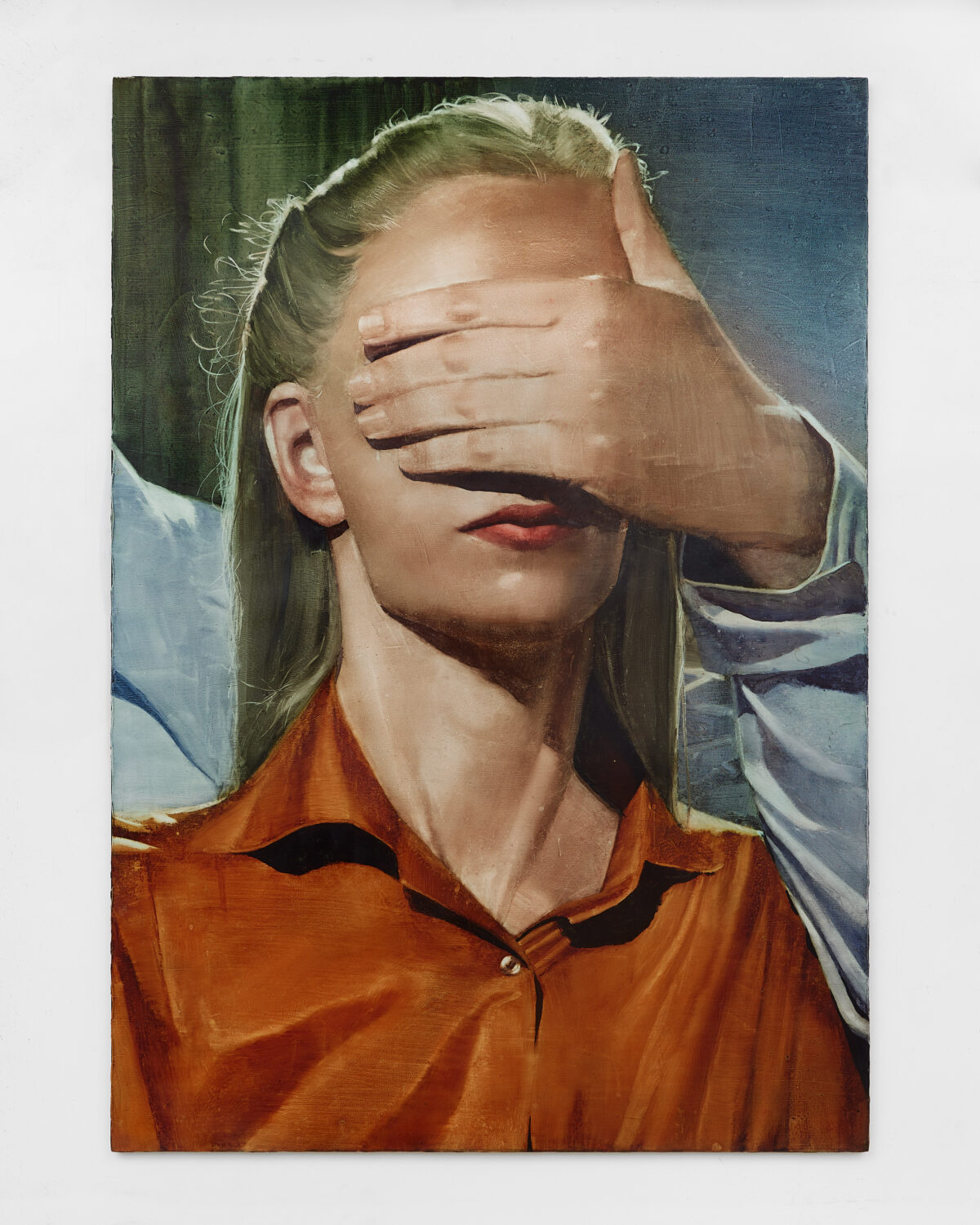
Time Weft, the solo exhibition of the London-based American painter Joseph Yaeger, is the first public showing of a new body of work. Taking found imagery from a wide range of sources – Youtube home movies, advertising, cult films – Yaeger’s paintings seem to freeze time. In Old long since, a towering watercolour on gessoed canvas, a woman’s eyes are covered by the hand of a shirted man who is cropped from the frame. On an adjacent wall in Inside a time are its lies, a man peers out of a hole cut into a sheet of glass, his face distorted by the foggy pane. Their transposition from video to canvas creates a strange sense of stillness, as if you’ve walked into a room where a film is playing. Whoever’s watching pauses it to talk to you, the frozen screen backdropping your conversation, hard to ignore. Crawling out of a visual landscape which is knowingly plugged-in to a contemporary cultural memory, the works are eerily familiar. Is the figure on the canvas an actor you recognise? A friend? Maybe, maybe not.
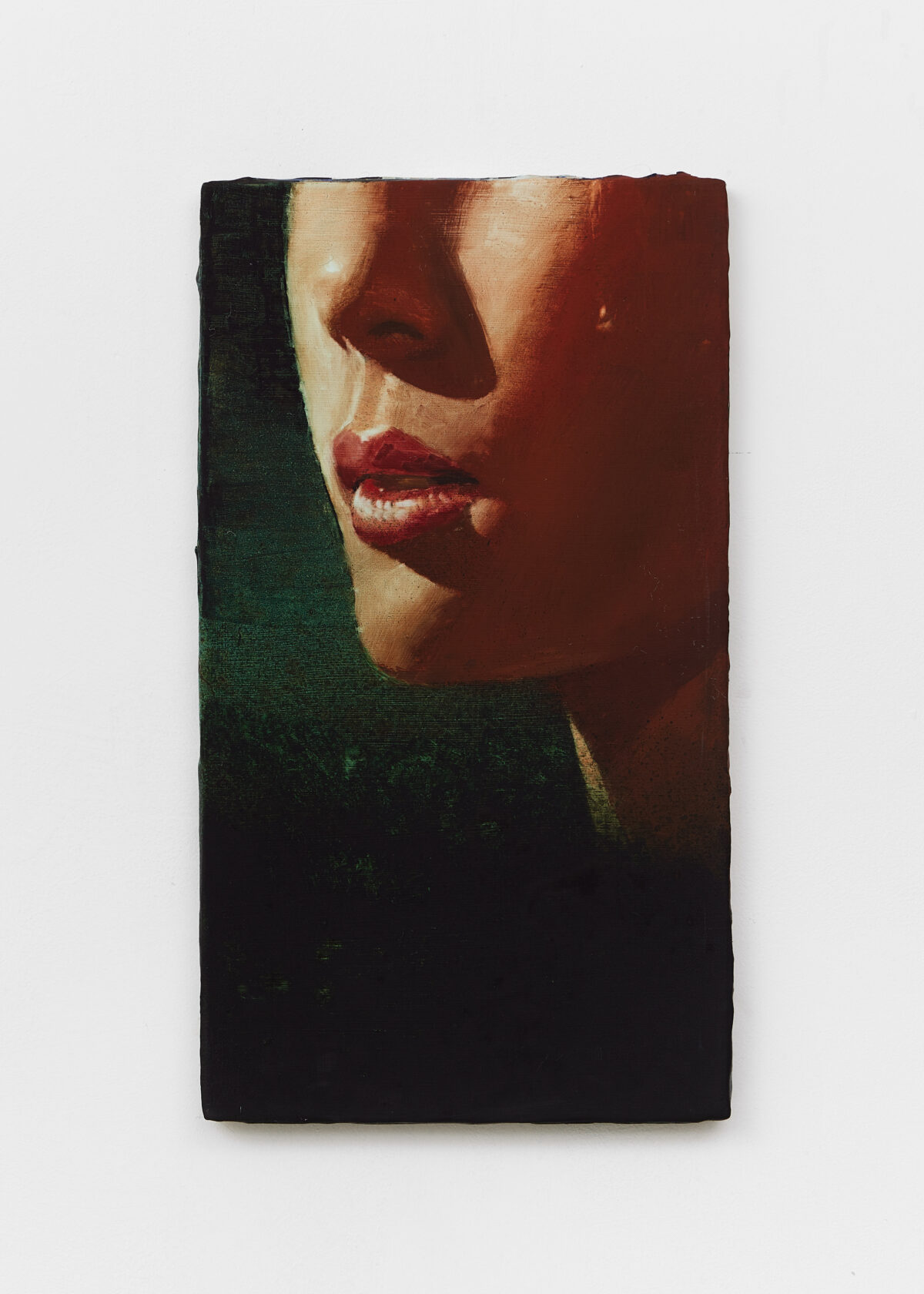
Despite their cinematic influence, the works are seductively painterly. Dripping off the edges of each canvas are luxurious layers of primer which Yaeger coats in washed watercolour, seeping into the cracks of the layers below. The creamy slipperiness of the painting process is revealed in all its glory, existing at a fascinating juncture to the screen-based subject matter. From a distance, the works glow with a perfect smoothness. The strawberry blonde hair of the woman in Elaborate coping mechanism seems almost iridescent, the lips of the figure in Eavesdropper luminous. Up close, the irresistible textures of different mediums sitting on top of one another are revealed, suggesting the graininess of an old video screen.
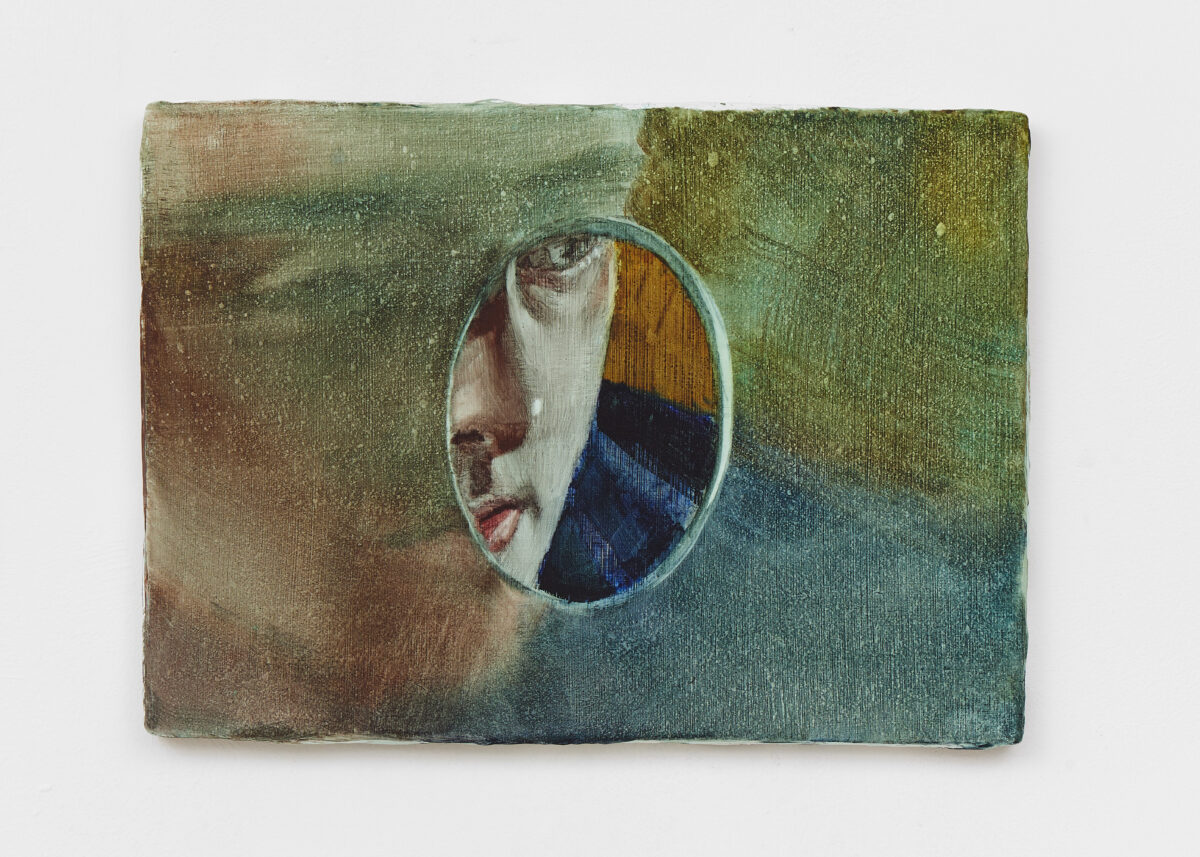
The uniqueness of The Perimeter’s space, a converted mews house in King’s Cross, feeds into the work. There is a quiet intimacy to the rooms which pushes through the slick 6a architects conversion, amplifying the feeling that we have appeared in someone’s living room where a family video plays on the TV. It feels almost padded, miles away from Grays Inn Road, a vacuum in which to experience this strange work. A central spiral staircase carries you up through the building leading off into small, shadowy alcoves where you can stumble upon tiny, spooky works like Slow down where it hurts. The variety of Yaeger’s scale is disarmingly powerful. At the top of the house is a circular skylight which floods light down the stairs. The echo of the painting a few floors below is uncanny. As I crane my neck up through the glass, I am half-hoping, half-expecting to see the face of Inside a time are its lies peering back at me.
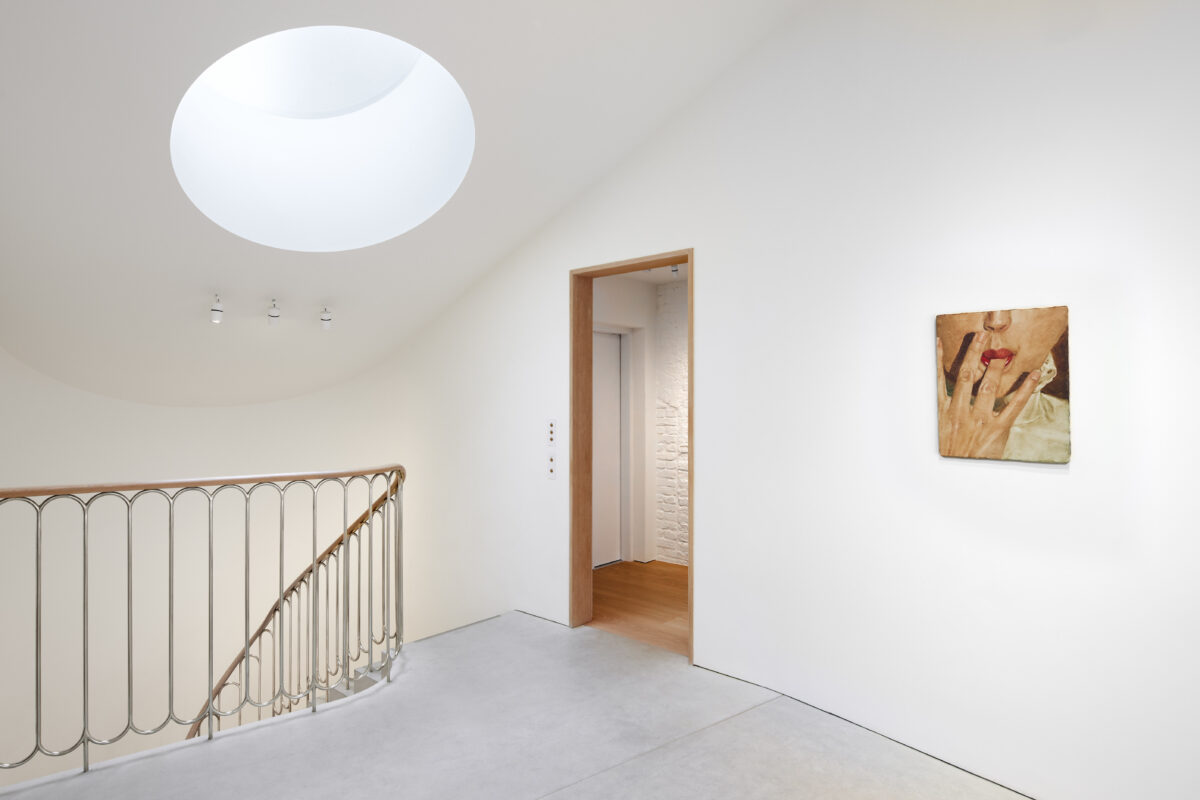
Accompanying the exhibition is a catalogue of Yaeger’s wider body of work alongside his own writings. The prose-poetic texts muse on the idea of the weft, the horizontal threads of a woven fabric. Using this, Yaeger considers the possibility and existence of a latitudinal notion of time. Weaving narratives of past, present and future, of memory and fiction, the writing inhabits the same landscape as the paintings: a landscape which seems to exist on an unusual plane of time, inside and outside of a known reality. Hand-placed inserts of paintings are slotted throughout the catalogue, fluttering out into the present day as I’m in the middle of reading.
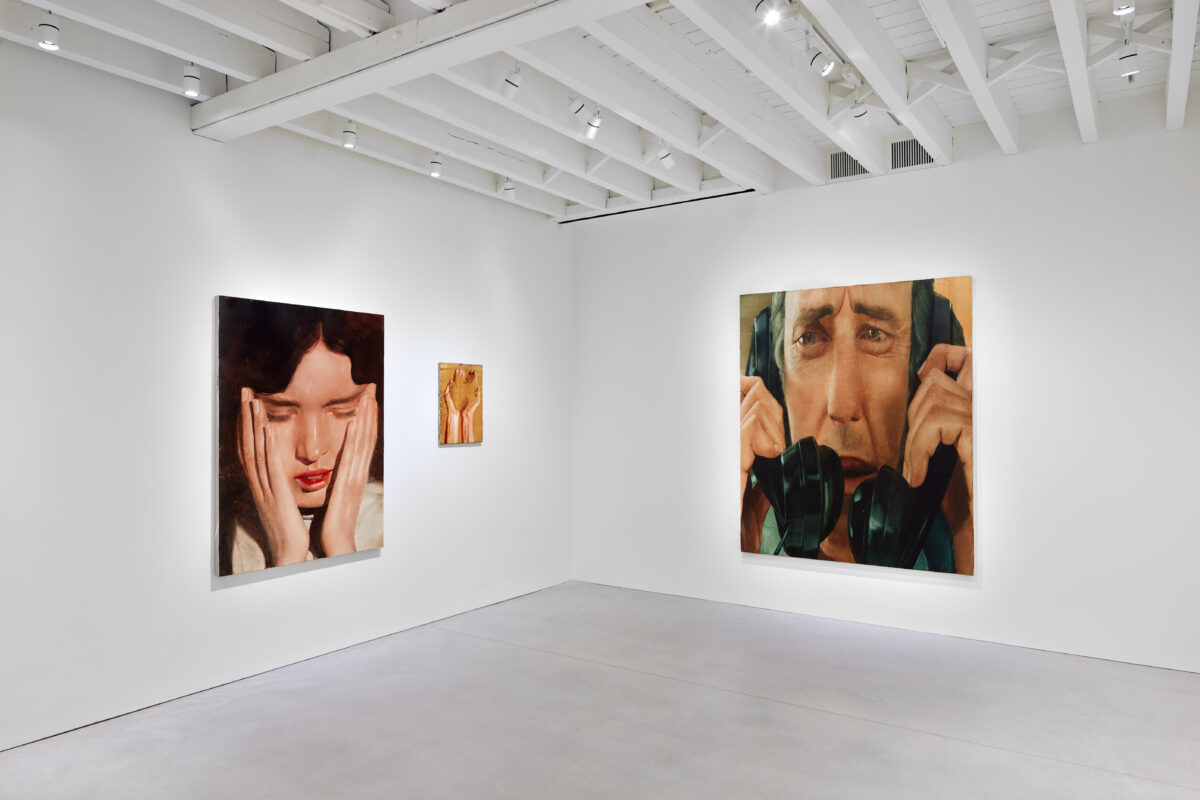
A sense of Yaeger’s entanglement with time ripples through the exhibition. It is more than a subject matter, more than the process of translating something in motion to something still, but is integral in his own positioning to the work. There is an anxiety to the body of paintings, a frantic documentation of his wide-ranging source material. After an almost ten-year hiatus from painting between his studies, the desire to paint feels greedy. There will never be enough to see, never enough to commit to the canvas. It’s infectious. I walked out of the show eyes wide to the world, I wanted to drink everything in.
By Jean Watt.
All images courtesy of the artist and Project Native Informant, London.
Photography courtesy of Stephen James.